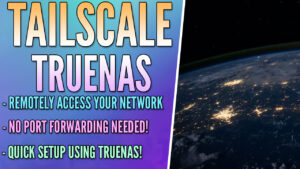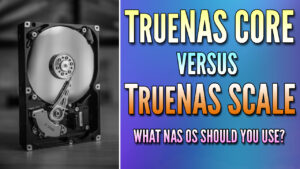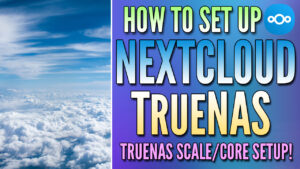In this article, we’re going to take a look at Unraid vs. TrueNAS. Unraid and TrueNAS are two NAS operating systems that allow users to manage data on their network. There is a ton of different configurations and applications that can be run on both operating systems, and in this article, we’re going to look at the key differences.
Before we get started comparing Unraid vs. TrueNAS, I want to be clear that both of these options are great and you’ll most likely be happy with either. However, there are fairly significant differences which we’ll take a look at below.
How Does Unraid Work and What is it?
Unraid is a network-attached storage operating system. Unraid lets you create, manage, and delete shared folders, and run applications (even create and run Docker containers). Unraid isn’t a traditional hypervisor, but it gives you the ability to create virtual machines if needed.
Unraid is incredibly user-friendly in my opinion. From my experience, a lot of NAS operating systems are confusing when you first set them up, but Unraid makes sense, meaning that you’ll get used to it quickly. Please keep in mind that Unraid is not free, so you must purchase a license based on the number of hard drives you intend to use.
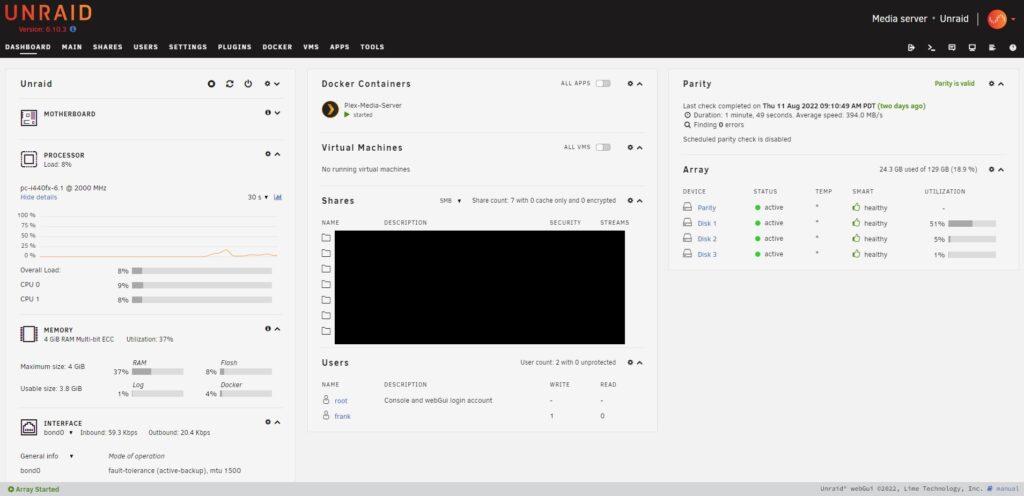
What is TrueNAS and How Does it Work?
TrueNAS is an operating system based on the OpenZFS file system. There are actually two different versions of TrueNAS: TrueNAS Core and TrueNAS Scale. TrueNAS Core has been available since 2005 (formerly known as FreeNAS) and is based on FreeBSD. TrueNAS Scale was released in 2022 and is based on Debian-Linux. They’re both similar, but different at the same time, so I urge you to learn about their differences if you decide to use TrueNAS.
Regardless of which version you use, TrueNAS is open-source and free, unlike Unraid.
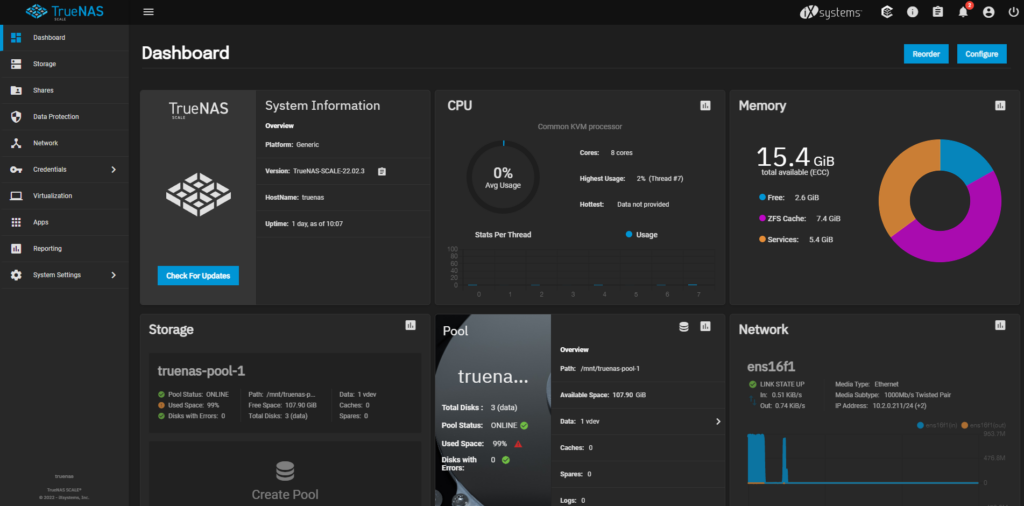
Unraid vs. TrueNAS: Key Feature Differences
These are the key feature differences between Unraid vs. TrueNAS to help you decide which NAS operating system is best for you.
File Systems
The first, and biggest difference between TrueNAS and Unraid is the file systems that they use. By default, Unraid uses XFS or BTRFS (you technically have the option of using ReiserFS as well, but support is deprecated), and was recently updated to allow for ZFS (as a pool, unlike a traditional Unraid Array).
On the other hand, TrueNAS uses ZFS ONLY, which has a ton of great benefits. These are entirely different and the biggest question you’ll have to answer is if you want to use ZFS. If you do, Unraid is now an option (though it never was), but even if you do want to use ZFS, you must determine if there’s any benefit in using an Unraid array as well.
When you set up Unraid, you’re instructed to add your hard drives and select one (maximum of two) drive(s) that will be used as the parity drive(s). The parity drives selected are what will protect your array against data loss.
If any of the drives on your NAS fail, the parity bits are what is used to rebuild a new hard drive. In its simplest form, if you have one parity drive, one hard drive can fail without data loss. If you have two (used for larger arrays), two hard drives can fail without data loss.
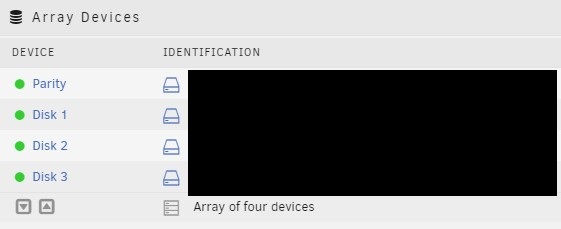
ZFS on TrueNAS is extremely different. When you set up a storage pool in TrueNAS, the majority of people will use RAIDZ1 or RAIDZ2. RAIDZ1 allows one hard drive to fail without data loss, and RAIDZ2 allows two hard drives to fail without data loss.
There are so many benefits to ZFS that I cannot begin to list them here, but I’d highly suggest you check out this article to learn about some of the benefits. Just keep in mind that adding new disks is not like it is with other filesystems.

Data Management
Unraid and TrueNAS are extremely similar when it comes to adding or removing data from your NAS. In both operating systems, you’ll create shared folders that can be accessed through your network (SMB, NFS, iSCSI, etc). This is the most important function of a NAS, and while the setup process will be different for each, the overall functionality and end-user experience will be the same.
One minor difference is that TrueNAS allows you to create snapshots by default. Snapshots will freeze shared folders on your NAS at a point in time and allow you to recover them in the event of data loss, corruption, or even ransomware attacks. Snapshots are easily configured in TrueNAS thanks to the ZFS filesystem.

Unraid is similar to TrueNAS in the sense that snapshots are supported, but only if you are using the BTRFS filesystem. If you’re using the XFS filesystem, you will not be able to use snapshots. XFS has its own benefits, but more modern features like snapshots are not supported. This is a big difference that you must consider if you’re planning on using XFS with Unraid.

Application Support
After setting up and configuring your Unraid server, there are tons of different services that you can run on your NAS, with a notable option being a media server like Plex. The way that applications are installed in Unraid is through the apps page, where you can browse or search for specific applications.
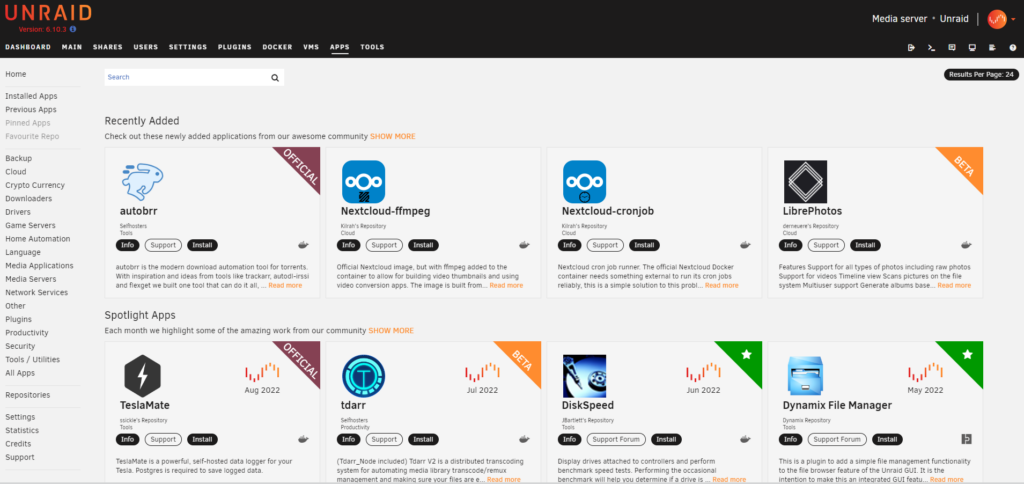
TrueNAS is very different than Unraid depending on which version you’re using. If you’re using TrueNAS Scale, you’ll have a ton of applications that you can install directly from the apps section.
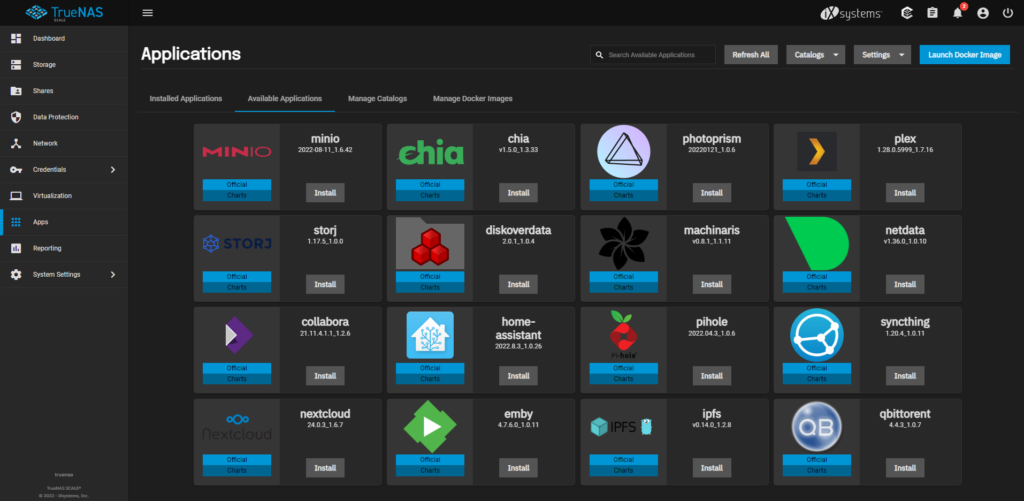
However, if you’re using TrueNAS Core, you create plugins. They function extremely similarly, but plugins are installed in jails, which means that the service is technically isolated from the operating system.

Ultimately, the end result is the same. You can run various services on your NAS operating system and while the setup process and installation location (inside of a jail, in docker, etc) will be different, the end result will be the same.
Compatibility & Requirements
From a pure compatibility standpoint, Unraid and TrueNAS will generally run on various different types of hardware. This means that if you have an old device laying around or want to build a new one, there’s a good chance that you’ll be able to get Unraid or TrueNAS working.
However, one key distinction is that ZFS is extremely memory hungry. The minimum amount of memory that you’re able to use on TrueNAS is 8GB, and most would suggest a minimum of 16GB. Unraid does not have these requirements and will run perfectly fine on systems with 2GB of memory (though at least 4GB is recommended).
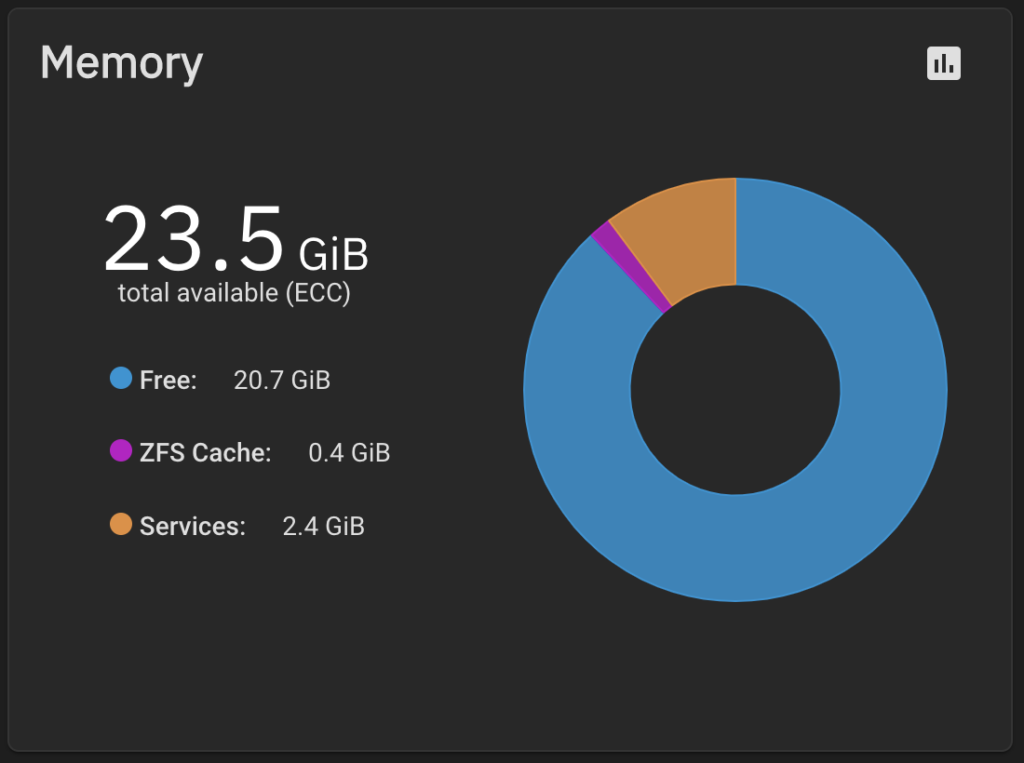
Another point that is highly debated is the use of ECC-memory with ZFS. Without going too far into detail, ECC memory will detect and correct memory errors, while non-ECC memory will not. This is a huge benefit as ECC memory should not write any errors to the disk. Many feel that for ZFS, this is a requirement, and thus view ECC memory as a requirement for TrueNAS. This is important to point out because if you want ECC memory, your hardware options are minimal – at least compared to non-ECC options.
While many view ECC memory as a requirement for TrueNAS, the counterpoint to that argument is that ECC memory will help all filesystems. The question you have to ask yourself (and most likely spend hours researching), is if you need ECC memory for TrueNAS.
On a personal level, I don’t run TrueNAS without ECC memory. If I am spinning up a system that has non-ECC memory, I am sticking with Unraid, but everyone will have to make their own decision which is why I’m pointing it out.
Differences Between Unraid and TrueNAS
Unraid and TrueNAS serve different needs for most users. Unraid is known for flexibility and allows adding disks of various sizes over time, maximizing storage use. It also offers user-friendly software for virtualization and Docker containers. On the other hand, TrueNAS (formerly FreeNAS) provides a more robust and business-oriented solution, featuring ZFS for data integrity and high fault tolerance.
Here are some addition differences between Unraid and TrueNAS:
| Feature | Unraid | TrueNAS |
|---|---|---|
| File System | XFS | ZFS, with built-in snapshots & RAIDZ |
| Performance | Good, less resource-intensive | Higher, but more resource-intensive |
| Data Protection | Parity drive-based | RAIDZ-based |
| Usability | Easy, flexible | More complex, advanced controls |
| VM Support | Strong support for Docker & VMs | Less emphasis on Docker & VMs, but available with TrueNAS Scale. |
| Hardware Requirements | More flexible, less demanding | More demanding, especially on larger arrays |
| Ideal Use Case | Home servers | Enterprise-grade applications |
Conclusion & Final Thoughts on TrueNAS and Unraid
In this article, we looked at Unraid vs. TrueNAS to try and determine which NAS operating system you should run. The core functionality of these systems is extremely similar, meaning that you’ll create shared folders and access them on your network, as well as configure things like Time Machine (using either Unraid or TrueNAS, as it’s generally the same on both).
You’ll also be able to install applications that can help utilize some of the data that exists on the NAS (like running a media server with Plex). From a core functionality standpoint, you’ll be happy with either.
Where these two operating systems differ (and what you should ultimately base your decision on) is the filesystem that you want to run. If you’re interested in running ZFS, you need to select between Unraid, TrueNAS Core, or Scale. Please keep in mind that as mentioned above, there are generally higher system requirements with this setup and many view ECC memory as a requirement.
If you want to run XFS or BTRFS, you should install Unraid, however, you must purchase a license based on the total number of hard drives you plan on using – something not required with TrueNAS.
You also have the benefit of requiring fewer system resources, as Unraid runs extremely well with 4GB of memory (though the official requirement is 2GB). Also, though ECC memory will always benefit NAS devices, many don’t view it as a requirement for XFS or BTRFS, as they do with ZFS.
I’m hoping that this article on TrueNAS vs. Unraid helped you make a more informed decision. If you have any questions, please leave them in the comments!

